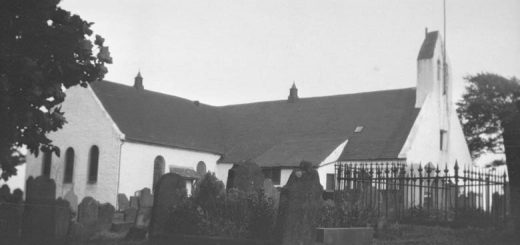Henry Edmund And The Fairies In Llanhilleth
There are many folk tales from Wales concerning fairies carrying people away. One such story is said to have taken place in Llanhilleth (Lanhiddel) and involved Charles Hugh, a person thought to have dealings with them. The following version appeared in British Goblins: Welsh Folk-lore, Fairy Mythology, Legends and Traditions (1881) by Wirt Sykes.
 ‘Henry Edmund, of Hafodafel, was one night visiting Charles Hugh, the conjuror of Aberystruth, and they walked together as far as Lanhiddel, where Hugh tried to persuade his companion to stay all night with him at a public house. Edmund refused, and said he would go home. ‘You had better stay,’ said Hugh in a meaning tone. But Edmund went out into the street, when he was seized by invisible hands and borne through the air to Landovery, in Carmarthenshire, a distance of fully fifty miles as the crow flies. There he was set down at a public house where he had before been, and talked with people who knew him. He then went out into the street, when he was seized again and borne back to Lanhiddel, arriving there the next morning at day-break. The first man he met was the conjuror Charles Hugh, who said, ‘Did I not tell you you had better stay with me?’
‘Henry Edmund, of Hafodafel, was one night visiting Charles Hugh, the conjuror of Aberystruth, and they walked together as far as Lanhiddel, where Hugh tried to persuade his companion to stay all night with him at a public house. Edmund refused, and said he would go home. ‘You had better stay,’ said Hugh in a meaning tone. But Edmund went out into the street, when he was seized by invisible hands and borne through the air to Landovery, in Carmarthenshire, a distance of fully fifty miles as the crow flies. There he was set down at a public house where he had before been, and talked with people who knew him. He then went out into the street, when he was seized again and borne back to Lanhiddel, arriving there the next morning at day-break. The first man he met was the conjuror Charles Hugh, who said, ‘Did I not tell you you had better stay with me?’



Re: Henry Edmund And The Fairies In Llanhilleth
THEY appeared diverse ways, but their most frequent way of appearing was like dancing-companies with musick, or in the form of funerals. When they appeared like dancing-companies, they were desirous to entice persons into their company, and some were drawn among them and remained among them some time, usually a whole year; as did Edmund William Rees, a man whom I well knew, and was a neighbour, who came back at the year’s end, and looked very bad. But either they were not able to give much account of themselves, or they durst not give it, only said they had been dancing, and that the time was short. But there were some others who went with them at night, and returned sometimes at night, and sometimes the next morning; especially those persons who took upon them to cure the hurts received from the fairies, as Charles Hugh of Coed yr Pame, in Langybi parish, and Rissiart Cap Dee, of Aberystruth; for the former of these must certainly converse with them, for how else could he declare the words which his visitors had spoken a day or days before they came to him, to their great surprise and wonder? [Rhys, Ernest, ed. (1859–1946). The Haunters and the Haunted. (1921). ]